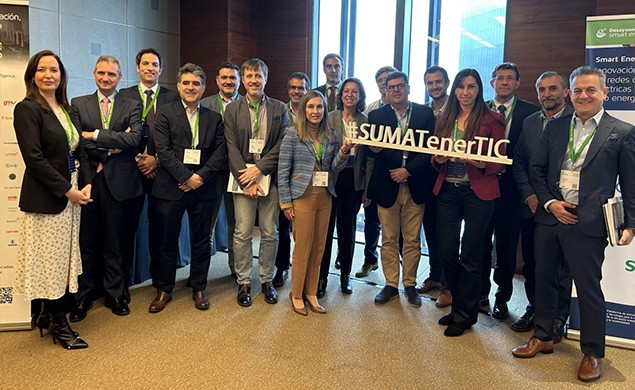The Future of Electricity Distribution Grids: Digitalization, Data Integration, Flexibility, and Collaboration

Electricity distribution grids were the focus of the recent breakfast colloquium organized by the enerTIC Platform, entitled “Innovation and Digitalization for Electricity Distribution Grids: Confronting the New Energy Challenge”. One of the event’s participants was Almudena Nieto de Castro, Business Development Manager for GMV’s Energy and Utilities sector, who joined other representatives from the industry and technology firms to discuss shared challenges, emerging trends, and their experiences in this area.
The market is currently experiencing a paradigm shift in relation to electricity distribution grids, and this is creating a series of new challenges that the industry needs to address. As a primary example of this, distributors have now become data managers, rather than just hardware companies focused on infrastructure. These days information has taken on a very significant role, but organizations are sometimes experiencing a lack of communication and difficulties with data integration and interoperability. This can in turn make it difficult to launch new projects, while also hindering innovation.
One part of the solution to this problem is the ability to initiate a process of digital transformation, and in fact, many of these companies are already immersed in this approach. However, one of the obstacles they continue to face is a lack of qualified personnel, who need to have the required skills for managing new technological environments, and for responding to the specific needs of each company.
Another challenge is the need to address the increasing role of end consumers, who are now looking for options that can incorporate electricity self‑generation and on‑site consumption. This arrival of new players into the electrical panorama is requiring distribution companies to reach new understandings with them. This means that one of the fundamental challenges organizations are now facing is that of increasing their flexibility, to become providers of distribution services that are able to leverage synergies with their customers.
There are also increasing needs to interact with governmental agencies, because this is a highly regulated market that must exist within a context of the changing legislation that is laying out the roadmap for the industry. In relation to this subject, the participants at the breakfast colloquium expressed their desire to see a stronger commitment to the industry among lawmakers, who they hope can develop a better understanding of the problems that could be addressed by new legislation.
Innovative technological solutions
In order to make progress towards finding solutions for these challenges, the participants at the colloquium agreed on the importance of acquiring technologies and digitalizing their business processes. Among other aspects, they highlighted the use of digital twins, which allows for real‑time viewing and, most importantly, prediction of what is happening on an electricity grid, which can in turn lead to more effective use of data. They also emphasized the need to increase financial and technological investment in low‑voltage networks, with the aim of improving monitoring, energy efficiency, and automation.
As another important aspect, the industry continues to make solid progress in the area of physical and digital security, which were two other topics under discussion at the colloquium. It was clear that all of the companies represented there have strong commitments to these two aspects. In relation to physical security, robotics and drones are becoming important allies for the industry, because they allow certain operations to be performed without putting the health of operators at risk. Virtual reality technologies are also being incorporated as a way to resolve problems at electrical substations, while use of the metaverse is also being explored for the purpose of training new professionals.
An increasing number of companies in the industry say that they are making cybersecurity a top priority, as digital data takes on more importance while simultaneously being exposed to threats of theft or hacking. Other technological solutions are now being commonly implemented to protect the industrial grid and communications at power plants, with additional focus being placed on improving the ability to recover after a potential cyberattack.
This breakfast gathering also gave the sponsoring technology firms an opportunity to present examples and case studies related to the topics discussed.
Next Generation EU funds
The subject of Next Generation EU funding was also addressed at the breakfast colloquium. As explained by several of the participants, there are already companies benefiting from this form of financial assistance. This has allowed them to start up innovative projects, where technology and energy efficiency have been playing a fundamental role.
However, attendees representing smaller electricity distributors also mentioned the difficulties they have faced in applying for this form of funding, because of the large number of institutions involved and the formal procedures that are sometimes excessively bureaucratic.
The colloquium was rounded out with a series of conclusions, which were focused on the need for collaboration among all players in the industry, and the importance of sharing knowledge and learning from each other. All of this will help address the challenges that the industry is now facing, by improving business processes, integrating technology and innovation on a day-to-day basis, making progress towards the energy transition, and maintaining a unified approach during negotiations with regulators.